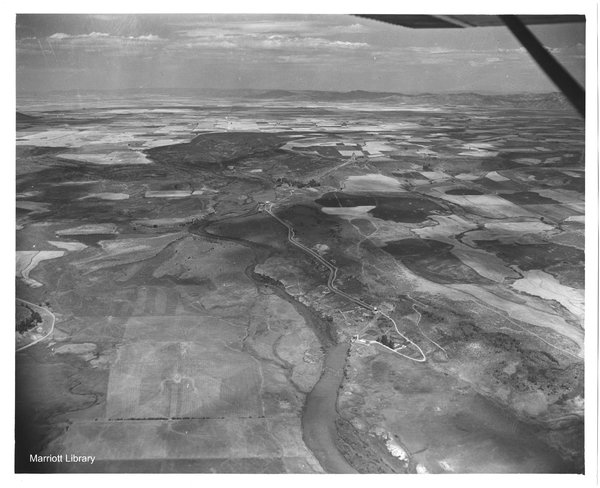Dublin Core
Title
Description
All of Bear River’s natural flow has long been spoken for. But the basin’s spring runoff is an additional source of water that is largely unallocated to this day. A 1930s drought generated interest in developing this water, but negotiations dragged on for decades. After all, over its short course the Bear runs through ten counties and three states. By 1958, Utah, Idaho, and Wyoming managed to ratify a Bear River Compact, but a 1962 proposal raised fresh concerns. The question was not whether to develop the runoff for storage and irrigation, but rather, who gets how much?
When the federal Bureau of Reclamation proposed the series of dams that would make up the new Bear River Project, it offered significant engineering expertise and substantial budgets. But the particulars led Idaho critics to characterize the project as a Utah water grab. The centerpiece of the proposal – and its biggest sticking point – was the High Oneida Dam. The dam would have inundated twelve thousand acres of farmland in Idaho, with much of the water flowing to Utah.
Despite the significant impacts, which included dramatically lowering Bear Lake, planners also overestimated public support. The Bureau of Reclamation had gotten used to clashing with environmentalists opposed to its dams, but in this case the critics were largely farmers and ranchers who supported water development. Opponents saw the ways that the project would harm them, either by flooding their land or charging more for water, while communities in other parts of the basin would reap the benefits.
Even in that heyday of Western dam-building, the Bear River Project never became a reality, largely because it failed to adequately account for all political constituencies. The Bureau of Reclamation admitted defeat in 1970, although the effort did lead to an updated Bear River Compact. Half a century later, the different constituencies in the Bear River Basin still haven’t agreed on how to store all of its water. Utah continues to develop plans, with a new Bear River Development Project slated to be built in 2045.
Creator
Source
_______________
See Robert Parson, “‘The Hardest Worked River in the World’: The 1962 Bear River Project, Utah and Idaho,” Utah Historical Quarterly 72 no 2 (2004): 136-155; Utah Division of Natural Resources, “Bear River Development,” accessed April 2022.

